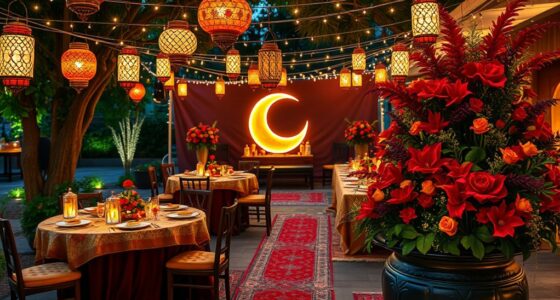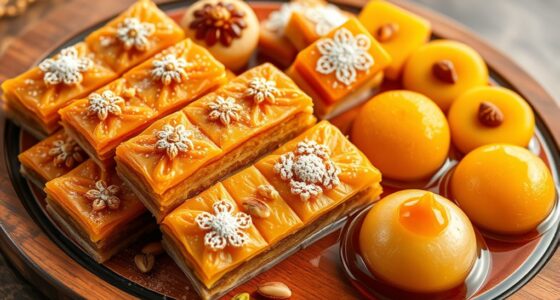Imagine sitting around a table with loved ones, laughter echoing as glasses clink softly, each filled with a rich, ruby-red wine shimmering in the candlelight. The complex flavors swirl on your palate, telling stories of sun-kissed vineyards and ancient traditions. Wine has a remarkable ability to bring people together, transcending cultures and time. In a world bustling with distractions, a moment shared over a glass of white wine or a bottle of sparkling wine can ground you, reminding you of the beauty of life’s simple pleasures.
This journey through the captivating world of wine invites you to explore its rich tapestry woven with history, culture, and tradition. From the sun-drenched valleys of France to the emerging vineyards of California, each sip tells a unique story. You’ll discover the remarkable variety of wine regions, delve into the artistry of red and white wines, and learn the essential craft of wine tasting and pairing. So, whether you are just beginning to identify the intricate notes of your favorite wine or are already a seasoned connoisseur, this guide is designed to deepen your appreciation and understanding of this beloved beverage.
Key Takeaways
- The history of wine production dates back to around 6000 BC.
- Regions such as France, Italy, Spain, and California are pivotal in the global wine industry.
- Wine tourism is rapidly growing, attracting travelers to popular vineyards.
- Wine culture is becoming more inclusive, appealing to diverse individuals.
- Understanding wine pairing can significantly enhance dining experiences.
- Moderate consumption of red wine is linked to health benefits.
Introduction to the Captivating World of Wine
Embracing the wine culture opens a doorway to an enchanting world filled with rich traditions and timeless practices. You can explore how wine has long served as a symbol of celebration, bringing together families and friends, and enhancing social gatherings. Each bottle tells a story, representing regions known for their distinct types of wine, such as France, Italy, and Spain.

Wine appreciation invites you to delve deeper into the various styles available. For instance, popular varieties like Pinot Noir, Merlot, and Chardonnay cater to an array of tastes and culinary experiences. Whether enjoying a romantic dinner with a bold Cabernet Sauvignon or sharing a refreshing Sauvignon Blanc with friends over seafood, each glass captures the essence of its heritage.
Cultural events such as France’s “Vendanges,” Italy’s “Sagra dell’Uva,” and Spain’s “La Fiesta de la Vendimia” illustrate the depth of wine culture across different nations. These festivities not only celebrate the grape harvest but also unite communities through lively parades, music, and tastings, showcasing the vibrant connections present in the world of wine.
As you navigate the intricacies of wine, you will uncover opportunities for personal growth and education. Engaging with the nuances of wine styles and traditions enriches your appreciation, making every sip a memorable experience.
The History of Wine: From Ancient Times to Modern Culture
The history of wine is rich and fascinating, with roots tracing back to some of humanity’s earliest civilizations. Ancient wine cultures played a pivotal role in shaping social rituals, religious practices, and even trade throughout history. Exploring the evolution of wine production provides insight into how this beloved beverage transformed across the ages.
The Role of Wine in Ancient Societies
Dating back to 6000 BC, the oldest evidence of wine production emerges from Georgia, signifying the beginnings of viniculture. This ancient knowledge spread as civilizations flourished. In Egypt, Greece, and Rome, wine became essential for daily life and religious celebrations. The Greeks embraced wine at symposia, where discussions of philosophy and art accompanied its enjoyment. Romans advanced the art of winemaking and established vineyards throughout their empire, which enriched cultures and economies.
Evolution of Wine Production
Wine production saw significant advancements beginning in the 15th century, coinciding with Europe’s expansionist period. During the medieval era, the Catholic Church became a dominant force in wine production, utilizing it for rituals and establishing monasteries as centers for winemaking knowledge. The Renaissance marked another turning point, as innovations in vineyard management and grape cultivation emerged. Discoveries in ancient pottery and vineyard remnants reveal the long history of wine production, illustrating how this craft has evolved from humble beginnings to the sophisticated processes admired today.

Exploring the Major Wine Regions of the World
Wine enthusiasts are often captivated by the diverse offerings from various regions around the globe. The world of wine is broadly categorized into Old World wine and New World wine, each presenting unique characteristics shaped by their respective terroirs and winemaking traditions. Let’s dive into the iconic wine regions that exemplify these two classifications.
Iconic Old World Regions: France, Italy, Spain
Old World wine regions, especially in Europe, boast a rich history of viticulture. France leads with its renowned wine-producing areas, such as Bordeaux, famous for its strict regulations allowing only six grapes in red blends, including Cabernet Sauvignon and Merlot. Burgundy, another prestigious region, is known for producing exceptional single-varietal wines like Pinot Noir and Chardonnay.
Italy is celebrated for its expressive wines tied to unique local traditions. Tuscany stands out for its Sangiovese-based reds, showcasing complex flavors in Chianti and Brunello di Montalcino. On the other hand, Piedmont is revered for Barolo and Barbaresco, exquisite wines derived from the noble Nebbiolo grape.
Spain adds to the allure with regions like Rioja, primarily using the Tempranillo grape for reds. This region’s aging classifications—Crianza, Reserva, and Gran Reserva—add another layer of complexity. The famed winery Vega Sicilia in Ribera del Duero attracts connoisseurs eager to experience its esteemed offerings.
Renowned New World Regions: California, Argentina, New Zealand
In contrast, New World wine regions introduce innovative techniques and vibrant styles. California, particularly Napa Valley, produces outstanding Cabernet Sauvignon and Chardonnay, benefiting from the warm Mediterranean climate and diverse terroirs. Surrounding areas like the Central Coast reveal extraordinary wines and culinary experiences, inviting exploration beyond Napa.
Argentina, notably the Uco Valley in Mendoza, has gained recognition for its Malbec wines, producing both single-origin and sophisticated blends. This region has become a significant player in the wine industry, positioning itself as the fifth largest wine region globally.
Across the ocean, New Zealand’s famous Marlborough region is celebrated for its zesty Sauvignon Blanc, contributing significantly to the country’s wine production. As you venture into these New World wine regions, you will discover a myriad of flavors and styles that continue to evolve and impress.

Understanding Different Wine Varieties and Their Characteristics
Delve into the fascinating world of wine to uncover the compelling characteristics that define various wine varieties. With over a thousand wine grapes cultivated globally, we’ll focus on iconic selections, encompassing the robust notes of red wine, the refreshing qualities of white wine, and the celebratory essence of sparkling wines.
The Diversity of Red Wines
Red wine captures an array of flavors and profiles that cater to diverse palates. Illustrated below are some prominent red wine varieties that highlight their unique attributes:
| Wine Variety | Origin | Characteristics |
|---|---|---|
| Cabernet Sauvignon | Global | Bold, firm, often noted for leathery and bitter textures. |
| Syrah (Shiraz) | Rhône Valley, France & Australia | Spicy, with rich tannins and dark berry flavors. |
| Zinfandel | Croatia | Fruit-forward with a bold body, often enjoyed in its pink variant, White Zinfandel. |
| Pinot Noir | France | Complex, higher acidity with a low-tannin finish. |
The Charm of White Wines
White wine brings a refreshing aspect to the table, characterized by its crispness and acidity. Here are notable white wine varieties:
| Wine Variety | Origin | Characteristics |
|---|---|---|
| Chardonnay | France | Can undergo oak aging imparting spicy notes or stay unoaked for a lighter, zesty profile. |
| Sauvignon Blanc | France | Tart, featuring herbal and “green” fruit flavors. |
| Pinot Gris | Italy, France, Germany | Light to medium-weight, easy-drinking, often with bitter hints. |
| Riesling | Germany | High acidity with variable sweetness, polarizing preferences. |
The Festivity of Sparkling Wines
Sparkling wines capture the celebratory essence of life with their delightful effervescence. Here’s a glimpse into their exciting characteristics:
| Wine Variety | Characteristics |
|---|---|
| Champagne | Typically crafted from Chardonnay, Pinot Meunier, or Pinot Noir grapes; showcased in a range of sweetness levels. |
| Prosecco | Light, fruity, often enjoyed in casual settings or special occasions. |
| Cava | Spanish sparkling wine made using traditional methods with depth and complexity. |
| Moscato | Sweet and fruity, perfect for dessert pairings. |

Each of these wine varieties offers distinct characteristics that contribute to the overall rich tapestry of the wine world. Understanding these can elevate your appreciation and selection process when exploring this savory journey.
Wine Production: The Art and Science Behind the Process
Understanding wine production reveals a fascinating interplay between art and science. It all begins with viticulture, the science of growing the grapes. As you delve into this world, remember the care involved in grape cultivation, which greatly influences the quality of the final product.
Viticulture: Growing the Grapes
The foundation of successful wine production lies in proper viticulture practices. There are dozens of wine grape varietals, each requiring specific climate and soil conditions for optimal growth. Grapes thrive best when they receive at least six hours of sunlight daily, which is essential for producing high-quality fruit. As you explore grape cultivation, you’ll find that the timing of the harvest is critical. Winemakers rely on tools like refractometers to measure sugar content, ensuring that the grapes reach the perfect balance of sweetness, acidity, and tannins.
Winemaking: Transforming Grapes into Wine
The winemaking process begins once the grapes are harvested, typically between August and November in the Northern Hemisphere. Manual harvesting is labor-intensive but allows for meticulous grape selection, a choice often made for high-quality wines. In contrast, mechanical harvesting is a faster method that can fill several vine boxes in an hour.
Once collected, the decision to make white or red wine influences how the grapes are processed. For red wines, pressing occurs after fermentation, while white wines are usually pressed first, separating the juice from the skins. Fermentation transforms grape juice into wine, with durations ranging from ten days to over a month based on the desired characteristics of the final product. Distinct yeast strains contribute various flavors and aromas during this critical stage, and winemakers may employ malolactic fermentation to enhance complexity.
The aging process further shapes a wine’s profile. Choices about barrel types, whether new or used, along with the duration of aging, play significant roles in flavor development. Ancient techniques, such as aging in clay amphorae, showcase the rich history behind wine production, while modern methods like stainless steel tanks have become popular for their ability to preserve fresh fruit flavors. Ultimately, each step in the winemaking process underscores the blend of science, art, and magic that makes crafting exceptional wines truly remarkable.

Wine Tasting: An Interactive and Sensory Experience
Wine tasting transforms the act of drinking into an engaging sensory experience that nurtures wine appreciation. Whether you are an experienced connoisseur or a novice, understanding fundamental tasting techniques elevates your enjoyment. This section will guide you through effective wine tasting methods and help you discover the delightful aromas and flavors that define each wine.
How to Taste Wine Like a Pro
To truly appreciate wine, you must delve deeper into the sensory experience it offers. Begin by observing the wine’s appearance, which includes color and viscosity. Follow this with swirling the wine in your glass. This action releases aromas, allowing you to identify various scent profiles. Take a moment to inhale deeply and note the fragrances that capture your attention.
- Consider tasting 6 to 10 wines during a session for comparative analysis.
- Using multiple glasses enhances side-by-side comparisons.
- Experiment with swirling, smelling, and sipping each wine to develop a robust sensory memory.
Engaging friends in your tasting sessions adds a layer of excitement as you share personal opinions and discoveries. Each palate is unique, leading to enriched discussions about flavors and preferences.
Understanding Wine Aromas and Flavors
Wine’s complexity is largely attributed to its flavors and aromas. Identifying these scents can greatly enhance your wine appreciation. A kit or fresh ingredients may aid you in recognizing floral, fruit, herbal, and spicy notes present in different wines. Consider blindfolded tasting to sharpen your ability to discern aromas without visual influences. The following aromas may be noteworthy:
| Aroma Category | Aroma Examples |
|---|---|
| Floral | Rose, Jasmine, Lavender |
| Fruit | Peach, Violet, Plum, Cherry |
| Herbal | Mint, Basil, Thyme |
| Spice | Cinnamon, Clove, Black Pepper |
Pay attention to potential wine faults such as wet cardboard smells, indicating a corked bottle. Keeping a wine journal can prove beneficial for recording your insights, preferences, and experiences. This practice helps you refine your tasting skills over time.

Incorporating these tasting techniques into your wine tasting routines will not only enhance your overall experience but also deepen your appreciation for the rich world of wine. Together, you and your friends can embark on this flavorful journey of discovery. Savor the wine tasting experience by taking the time to really engage with each wine, noticing its unique flavors and aromas. Encourage open discussion and reflection with your friends as you explore new varietals and regions. By incorporating these tasting techniques, you will gain a more nuanced understanding of the complexities of wine and develop a deeper connection to the art of winemaking.
Wine Pairing: Enhancing Your Dining Experience
Wine pairing is not just about selecting a bottle to accompany your meal; it transforms the entire dining experience. Understanding how to pair food and wine can elevate both the flavors of the dishes and the enjoyment of the wine. Whether you are hosting a dinner party or enjoying a quiet meal at home, thoughtful wine recommendations can make all the difference.
Perfect Pairings for Red and White Wines
Knowing the characteristics of different wines enhances your ability to create perfect pairings. Here are some fundamental guidelines:
- Acidity: Select Sauvignon Blanc for acidic dishes, while Chardonnay complements creamy foods.
- Body: Use Pinot Noir with delicate dishes; opt for Cabernet Sauvignon with richer, heavier meals.
- Tannins: Pair Cabernet Sauvignon with fatty meats for balanced flavor.
- Alcohol Level: Consider higher alcohol wines for sweeter dishes, as they tend to match well.
- Flavor Profile: Match wine and food by either complementing or contrasting dominant flavors.
Special Occasions and Wine Choices
Choosing the right wine for special occasions can enhance the overall experience significantly. Here are some tailored wine recommendations:
| Occasion | Recommended Wine | Pairing Suggestions |
|---|---|---|
| Date Night | Pinot Noir | Beef or rich vegetarian dishes |
| Holiday Dinner | Cabernet Sauvignon | Tender prime rib or roasted vegetables |
| Casual Gathering | Rosé | Charcuterie or grilled shrimp |
| Celebration | Sparkling Wine | Fried appetizers or salty snacks |
| Sophisticated Dinner | Chardonnay | Creamy pastas or buttery seafood |

Wine Culture and Traditions Around the Globe
Wine culture is a rich tapestry interwoven with local traditions and celebrations across the globe. From lively wine festivals to ancient winemaking practices, each region brings its own unique flair to the world of wine. Immerse yourself in these fascinating gatherings and the heritage that shapes their distinct identities.
Festivals Celebrating the Grape Harvest
Wine festivals offer a vibrant platform for communities to celebrate the grape harvest, showcasing local customs, music, and, of course, exceptional wines. Some notable events include:
- Haro Wine Festival in La Rioja, Spain, celebrated annually on June 29th, where locals engage in joyful celebrations with wine and lively entertainment.
- Saint John’s Eve in Italy, where traditions involve leaving a bottle of wine exposed to midsummer dew, believed to have curative properties.
- Pinotage Pouring Ceremony in South Africa, a unique rite that connects newborns to their heritage.
- Kagami Biraki in Japan, which involves breaking open a sake barrel symbolizing new beginnings.
Traditional Winemaking Practices
Many regions maintain traditional winemaking practices that reflect their rich heritage. For example:
- Georgia boasts the world’s oldest winemaking culture, with evidence of wine production dating back over 8,000 years. Their unique method involves fermenting wine in Kvevris, large buried clay pots.
- In Peru, the Spanish introduced vineyards in the 16th century, with the Ica Valley becoming the primary region for grape cultivation due to its arid climate.
- Canada excels in producing ice wine, a sweet dessert wine created from grapes that freeze on the vine, primarily made from the thick-skinned Vidal grape. This specialty stems from German influences brought by immigrants in the 1700s.

These traditions not only preserve local identities but also promote a sense of community and joy, integral to the global traditions surrounding winemaking. Through engaging experiences, you can explore the various facets of wine culture and discover how each region celebrates its unique heritage.
Discovering Hidden Winery Gems
Exploring hidden wineries can lead to unforgettable adventures away from the bustling main vineyards. These lesser-known gems not only offer a unique take on winemaking, but they also provide you with personalized experiences that large wineries often cannot match. Whether you’re in California or Texas, innovative wineries are redefining the wine landscape with sustainable practices and creativity.
Innovative Wineries to Visit
In the heart of Sonoma and Napa, you’ll find remarkable hidden wineries that are worth your time. For example, Bedrock Wine Co. began in a makeshift chicken coop, showcasing Morgan Twain-Peterson’s dedication to innovative winemaking. Scherrer Winery has held strong since 1991, featuring a family-oriented operation that ensures every bottle reflects the winemaker’s passion.
- Adobe Road Winery, founded by Kevin Buckler, produces artisanal wines from carefully sourced vineyards, enriching your tasting journey.
- Tongue Dancer Wines, with its small production of exquisite varietals, focuses on enhancing mouthfeel quality to create memorable sips.
- Donelan Family Wines in Santa Rosa offers award-winning selections, highlighted by their Signature Tasting Experience that invigorates your palate.
Unique Experiences at Lesser-Known Vineyards
Finding unique vineyard experiences adds layers to your wine journey. In Fredericksburg, Texas, the vibrant wine scene features less explored treasures. Kuhlman Cellars emphasizes Texas terroir with sustainability at its core, while Invention Vineyards artfully blends tradition with modern ingenuity, resulting in diverse offerings.
For a deeper dive into Texas wine history, Texas Heritage Vineyard provides guided tours that celebrate the state’s winemaking legacy. Jenblossom Cellars offers small-batch artisanal wines perfect for those who appreciate quality and uniqueness. Siboney Cellars rounds out your exploration, marrying culture and flavor through traditional winemaking techniques.

The Impact of Climate and Terroir on Wine Quality
Understanding the relationship between terroir and climate influence offers profound insights into the quality of wine produced in various regions. The unique characteristics of each wine are shaped by factors such as soil composition, temperature, and geographical location. These elements contribute to the flavors, aromas, and overall quality of the wines you enjoy.
Understanding Terroir: Soil and its Influence
Terroir encompasses the environmental conditions that affect grape growing, particularly soil types. Different soils yield distinct results in wine production:
- Sandy soils are known for producing wines like Sauvignon Blanc, which feature zesty acidity.
- Clay-rich soils often give rise to Bordeaux Merlot with its rich fruit character.
- Volcanic soils result in wines such as Nerello Mascalese, which exhibit earthy nuances and bright acidity.
- Additionally, sandy soils lead to vibrant Chardonnay from Chablis, renowned for its intense aromatics.
- Wines grown in clay-rich soils like Sangiovese from Tuscany are praised for their structured tannins and robust body.
- Assyrtiko from Santorini benefits from its volcanic origins, presenting earthy flavors with a characteristic smokiness.
The Role of Climate in Wine Flavor Development
The influence of climate on wine quality cannot be understated. Various climate conditions foster diverse wine characteristics:
- Cool climates yield wine styles like Pinot Noir from Oregon, notable for its bright acidity and delicate red fruit flavors.
- On the other hand, warm climates favor bolder wines such as Cabernet Sauvignon, often produced in sandy loam soils of Napa Valley, featuring ripe blackberry and cassis notes.
- Climate can also dictate the ripening process of the grapes, crucial for achieving desired traits in the wine.

| Soil Type | Associated Wine | Flavor Profile |
|---|---|---|
| Sandy | Sauvignon Blanc | Zesty acidity |
| Clay-rich | Bordeaux Merlot | Rich fruit character |
| Volcanic | Nerello Mascalese | Earthy nuances |
| Sandy | Chardonnay (Chablis) | Intense aromatics |
| Clay-rich | Sangiovese | Structured tannins |
| Volcanic | Assyrtiko | Smokiness |
In summary, the combination of terroir and climate creates a unique identity for each wine, making exploration of these elements essential for any wine enthusiast. Understanding these factors adds depth to your appreciation of the beloved beverage.
Engaging with the Wine Community: Courses and Workshops
Being part of the wine community offers numerous opportunities for enhancing your wine education. Engaging in workshops and attending events allows you to deepen your knowledge, whether you are a beginner or aiming to become a certified connoisseur. The variety of workshops available caters to different interests and skill levels, making it easy for you to find something that resonates.
Wine Education: From Novice to Connoisseur
Courses serve as essential stepping stones in your journey through wine education. Consider programs like the Certified Specialist of Wine Program for $1,695, offering a comprehensive understanding of wine regions and varieties. The Italian Wine Scholar™ certification from the Wine Scholar Guild at $1,195 brings a focused approach to Italian wines. For those interested in regional expertise, the California Wine Appellation Specialist CWAS® is another excellent option at $1,595.
The diversity in workshops ensures an engaging atmosphere, allowing you to interact with instructors and fellow wine enthusiasts. Examples include:
- Grandes Pagos de España Terroir Workshop: $495
- Somm Essentials: $1,795
- Intro to Wine Series: $995
- 2-Day Wine Immersion Experience: $695
Networking through Wine Events
Wine events play a crucial role in building connections within the wine community. With over 30,000 events promoted by Vesta for wineries and bottle shops, there’s ample opportunity to meet experts and fellow enthusiasts. As small, independent vineyards take the spotlight, these gatherings become essential for fostering relationships and encouraging loyalty among customers. In 2023 alone, 19,153 promotions demonstrated the vibrancy of wine events.
The desire for outdoor experiences at wineries is growing, with a range of successful event ideas to enhance customer engagement. Notable suggestions include:
- Live music concerts
- Movie nights
- Wine tastings
- Cooking classes
- Paint and sip events
- Trivia nights
Attending these events not only heightens your appreciation of wine but also provides valuable networking opportunities that can lead to deeper involvement in the wine community.

Wine for Every Occasion: Choosing the Right Bottle
Selecting the perfect wine can significantly enhance your gathering, whether it’s an intimate dinner or a casual get-together with friends. Understanding the nuances of occasion-specific wine allows you to create memorable experiences. Below, discover the best wines tailored for different occasions.
Wines for Intimate Dinners
When planning a romantic dinner, consider wines that complement the mood and enhance the meal. Elegant dinner wines like the 2012 Champagne Collet “Esprit Couture” Brut or the robust 2016 Henschke “Mount Edenstone” Shiraz Eden Valley can add a touch of sophistication. For a more unique offering, explore adventurous options such as a white Hermitage or a red wine from Provence. The complexity of these wines provides an elevated experience, engaging both the palate and conversation.
Wines for Casual Gatherings with Friends
For informal settings, the key is to choose wines that are versatile and broad appeal. A light and refreshing Wilson Creek Chardonnay brings bright flavors of tropical fruit and subtle oak, making it perfect for outdoor gatherings and picnics. On the other hand, Wilson Creek Rosé, with its delicate pink hue and flavors of fresh strawberries and watermelon, can add a celebratory touch to events like Valentine’s Day. Pairing wines with specific dishes can elevate your gathering; for instance, Sauvignon Blanc or a full-bodied Cabernet Sauvignon works exceptionally well with seafood and grilled meats. Don’t forget about sparkling wine, an excellent choice for birthday celebrations, infusing the fun with its bubbly charm.

Conclusion
Your wine journey has led you through a rich tapestry of history, regions, varieties, and cultural traditions. Throughout this exploration, you’ve learned that wine appreciation goes far beyond mere preference; it involves understanding the intricacies of taste, aromas, and the significance behind wine quality. Engaging in a thorough evaluation during tastings allows you to discern a wine’s aging potential, ideal drinking timeframe, and perfect food pairings, enhancing your overall experience.
As you delve deeper into the world of wine, remember that every sip invites you to celebrate the craftsmanship behind it. Whether you’re enjoying a robust red wine with a hearty meal or sipping a refreshing white with seafood, the harmony of wine and food is pivotal. Moreover, embracing the details of each bottle—its clarity, aroma, and palate—empowers you to connect more deeply with the wines you choose.
Ultimately, your journey through wine is a celebration of the craft and passion poured into each vintage. By understanding the essential aspects of quality and pairings, you’re equipped to make informed choices that elevate your dining experiences. Cheers to your continued exploration and enjoyment of the fascinating world of wine!










